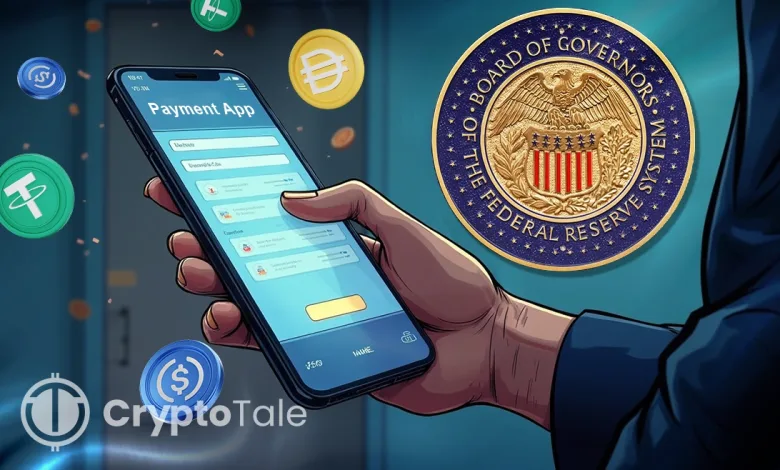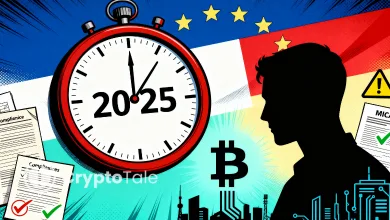Fed Proposes “Payment Accounts” for Digital Firms: Report

- Federal Reserve to give stablecoin and fintech firms direct access to payment systems.
- The new “payment accounts” end reliance on traditional banks.
- The move aims to modernize U.S. payments while keeping Federal Reserve risks controlled.
The Federal Reserve has announced a plan to allow stablecoin issuers and fintech companies direct access to its payment system. The proposal removes the need for partnerships with traditional banks. Fed Governor Christopher Waller revealed the plan at the central bank’s first Payments Innovation Conference on October 21. He called the new framework “payment accounts” or “skinny master accounts.”
The decision marks a major change in policy. For years, the Fed has taken a cautious approach toward crypto-linked businesses. Several companies have struggled to gain banking access through court battles and regulatory hurdles. With this new plan, some of those firms could now connect directly to the Fed’s payment network under defined restrictions.
Limited Payment Access for Eligible Fintechs
Companies such as Custodia Bank and Kraken, which have long sought Fed master accounts, may benefit first. Their previous applications faced delays and legal disputes. Under the proposed model, qualified institutions would connect to the Fed’s payment rails but under stricter limits than traditional banks. The aim is to give payment access while reducing risk exposure to the central bank.
Waller said these payment accounts would serve institutions that currently rely on third-party banks. He explained that these accounts would offer basic Fed payment services but exclude certain privileges. Participants would not earn interest on balances and would have strict limits on how much they could hold. The accounts would also reject transactions once balances reach zero.
Institutions using these accounts would not have access to daylight overdrafts or borrowing from the Fed’s discount window. Some other payment services may also be unavailable where the Fed cannot manage overdraft risk. Waller said the services would be tailored to match the specific risks each firm presents to the Fed and the overall payment system.
He added that the plan does not change who qualifies. Any legally eligible company could apply for a payment account under current laws. The Fed aims to move in step with rapid developments in payment technologies. Waller said the goal is to stay relevant as innovation reshapes how money moves across systems.
Fed Engages Crypto Leaders
Ripple and Anchorage Digital, both awaiting decisions on their master account applications, could also see progress. Their cases have been pending for months. The proposal drew interest from crypto and fintech executives attending the conference, including Chainlink CEO Sergey Nazarov, Coinbase CFO Alesia Haas, and Circle President Heath Tarbert.
Waller told the audience that the decentralized finance sector is now seen as a partner, not a threat. He said it was the first time innovators were invited to discuss the future of U.S. payments at the Federal Reserve itself. He noted that this open approach would have been unthinkable a few years ago.
Related: Arthur Hayes Predicts Trump Shaping Fed Policy by 2026
During the sessions, Nazarov discussed how interoperability remains a major challenge between digital assets and traditional finance. He said these talks mark a step forward for cooperation. Michael Shaulov, CEO of Fireblocks, spoke about the strength of blockchain for secure custody. He said improving regulation helps traditional banks explore blockchain systems.
Jennifer Barker from BNY Mellon also supported closer work between banks and decentralized systems. She said DeFi allows nonstop dollar transactions, something many banks cannot yet offer.
The Fed has not provided a timeline for when payment accounts would be available. Waller said staff would engage with stakeholders to study the proposal’s benefits and risks. The final decision would follow feedback and further review. The plan signals a controlled but significant step toward modernizing U.S. payment access for digital finance.





